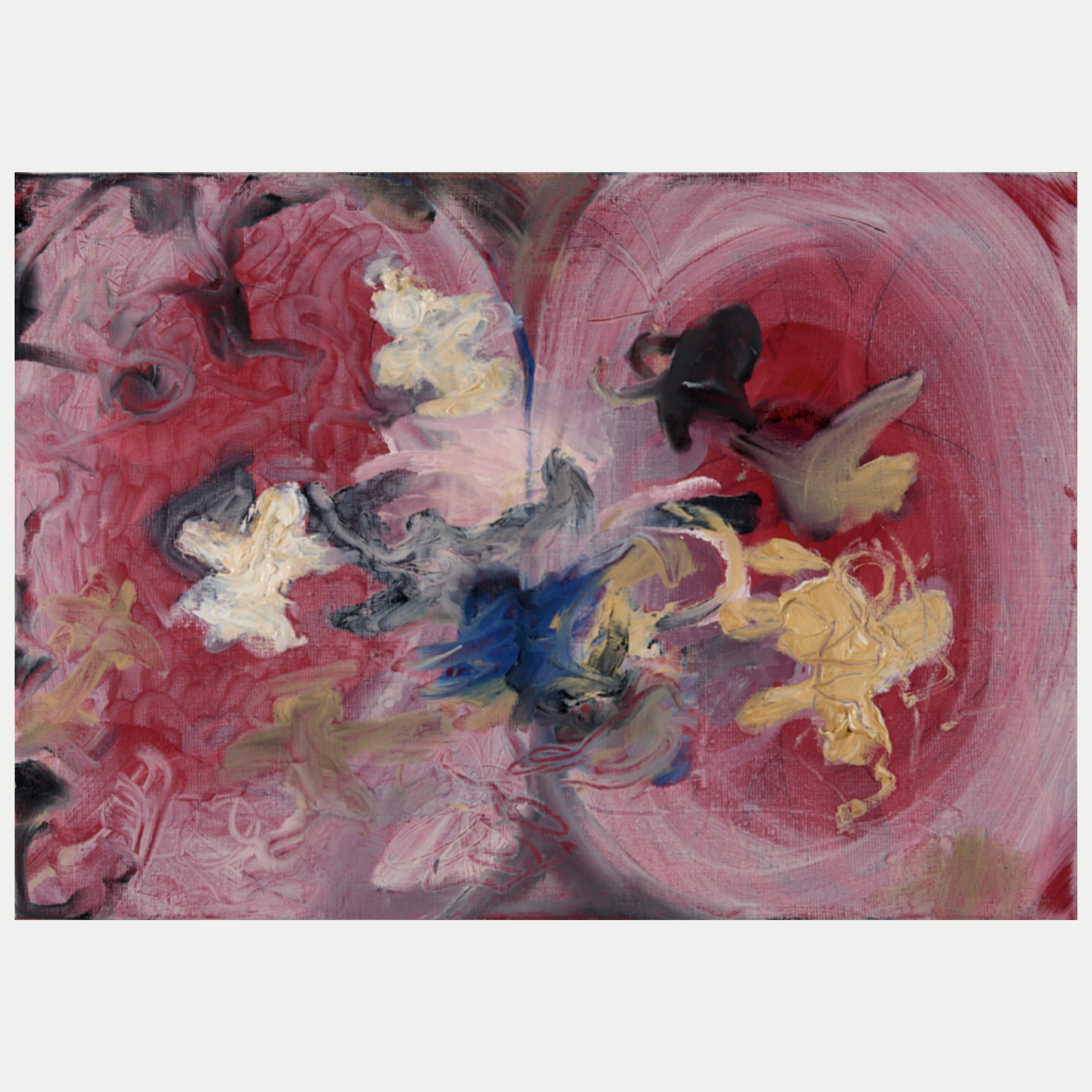Dasha Loyko-Greer
Dasha Loyko-Greer (b.1995 Minsk, Belarus) is an interdisciplinary artist based in London. She works predominantly across written and performed language, gestural painting, and multisensory installation.
Grounded in her early training in philosophy and her interest in expanded states of consciousness, Loyko-Greer considers self-exploration as a tool for understanding the nature of reality. She questions the subconscious narratives we use to frame our experience, seeking to make them visible, malleable, and unfixed. In particular, she is interested in the self- and reality-defining scripts we internalise in response to fear, guilt, shame, and trust in authority.
Her work is playful and irreverent. Frequently employing her voice and somatic practices as well as intuitive mark-making, free association, and wordplay in order to break out of her own habits of perception, Loyko-Greer describes her work as a celebration of consciousness.
Dasha Loyko-Greer holds an MA from the Royal College of Art in Contemporary Art Practice (2019) and a BSc from the London School of Economics in Philosophy, Logic & Scientific Method (2017). She has had two solo exhibitions in London, at lake (2023) and Harlesden High Street (2019). Her work has been shown at Liverpool Independents Biennial, MK Gallery, Gossamer Fog, Science Museum, Horse Hospital, among others. Her writing has been published in two collections by Prototype (2021, 2023) and as a solo publication by If a Leaf Falls Press (2023). She holds an Exceptional Talent endorsement from the Arts Council England (2020).
Browse available works:
Find out more:
Here you can get to know more Projects by Dasha Loyko-Greer
Insert more text here about your other porjects;
Other paintings, installations, music or process videos to complete your profile
Artist interview:
Resist Science Fiction (installation view)
Harlesden High Street, London
2019
Georgios, Gravity & God (installation view)
Lake, London
2023
The evolution of urban green spaces parallels the way we perceive and interact with visual elements in design, including typography. Just as a well-curated green space enhances the urban environment and promotes community engagement, a thoughtfully chosen font can transform the character of a project, offering clarity and fostering connections with the audience.
Fonts function as the silent narrators of our written communications, much like plants serve as the living storytellers of a garden. The selection of a font—be it a classic serif for its timeless elegance or a modern sans-serif for its sleek, approachable appearance—can significantly influence the mood and usability of a piece.
Consider how cities implement green solutions, selecting native species that thrive in their unique environments. Similarly, choosing the right typeface involves understanding the context in which it will be used, ensuring it resonates well with its surroundings and intended message.
Moreover, the psychological impact of font choices mirrors the benefits derived from green spaces. Research shows that certain fonts can enhance readability and evoke emotions, much as exposure to nature can uplift spirits and improve mental health.
In the quest for a harmonious relationship between urban development and environmental stewardship, both greenery and typography remind us of the intrinsic power of design—how it shapes our experiences and connects us to our communities, whether through lush parks or evocative text.






